|
~
516 Squadron
RAF (Combined Operations ) - SW
Scotland ~
In Support of Landing Craft
Training
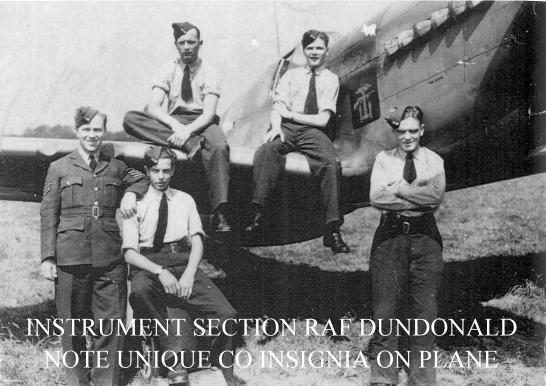 516 Squadron RAF (Combined
Operations), primarily provided air support
for Combined Operations training exercises in amphibious landings. As the
landing craft approached the training beaches to discharge their troops in the
final stages of training courses, aircraft from the squadron would lay down smoke and/or strafe the beach area to simulate
the conditions the troops would encounter in battle. The Squadron
also helped to calibrate the radar of three newly commissioned Fighter Direction
Tenders, which would provide forward radar cover off the Normandy
beaches. Much of the training in amphibious landings and
516 Squadron were located in the west of Scotland. 516 Squadron RAF (Combined
Operations), primarily provided air support
for Combined Operations training exercises in amphibious landings. As the
landing craft approached the training beaches to discharge their troops in the
final stages of training courses, aircraft from the squadron would lay down smoke and/or strafe the beach area to simulate
the conditions the troops would encounter in battle. The Squadron
also helped to calibrate the radar of three newly commissioned Fighter Direction
Tenders, which would provide forward radar cover off the Normandy
beaches. Much of the training in amphibious landings and
516 Squadron were located in the west of Scotland.
[The photo opposite is believed to be the only example of an RAF
aircraft bearing the Combined Operations badge.]
Background
On the 27th October
1941, a reluctant Lord Louis Mountbatten was urgently recalled from Pearl Harbour
to London by Prime Minister, Winston Churchill. Mountbatten had taken time out
while his beloved ship, HMS Illustrious, was undergoing repairs in
Norfolk, Virginia. After a thorough briefing by Churchill at Chequers,
Mountbatten took over the position of Adviser and Commodore of Combined
Operations (ACO) from Admiral of the Fleet, Lord Keyes.
His primary
task was, in harmony with the Chiefs of Staff of the three main armed services, to develop a strategy for
an overwhelming invasion against the entrenched enemy
forces along the coast of mainland Europe
and North Africa. This included the acquisition and
development of landing craft and equipment and the recruitment and training of
hundreds of thousands of service personnel in amphibious warfare. Mountbatten
was to think offensively, while the three main
services concentrated on the defence of the country on the high seas and
in the air, while the Army recruited, re-equipped and trained
land forces for the battles that lay ahead on mainland Europe and elsewhere.
Personnel for the top
positions in Combined Operations Command HQ (COHQ) were recruited from the best
the three Services had to offer. Their enormous task in training and equipping
hundreds of thousands of service personnel for amphibious landings on hostile
beaches needed personnel of the highest calibre. The service personnel from the
three services needed realistic training to work together as a disciplined,
unified force. To provide air support for these
complex training operations and in calibrating and testing new equipment such as
radar, an Air Staff with aircraft appropriate to the task, were needed for
Combined Operations.
  Plans
and Preparations Plans
and Preparations
During the first
meeting of the Combined Operations Policy Committee on the 6th November 1941,
the question of the Air Staff needed by the ACO was deferred to an Ad Hoc
Committee. This was chaired by the Assistant Adviser on Combined Operations
(Air) Group Captain Willetts, who was the most senior RAF Officer on the ACO's staff
at the time. They recommended that Air Staff would
form part of the Combined Training Centre at the No 1 Combined Training Centre, Inveraray, commanded by
a rank equivalent to Navy & Army ranks there and that a composite or heterogeneous air
squadron was needed for experimental purposes.
[Map courtesy of Google Map Data 2017.]
An exchange of letters
followed between the ACO and the Chief of Air Staff, Sir Charles Portal. In
his reply of the 8th November 1941, Portal sanctioned the provision of a
nucleus staff but he made no mention of the experimental air squadron. On the 9th of
November, AVMWF Dickson, Director of Plans at the Air Ministry, instructed the
Director General of Organisation to establish the Air Staff but, once again,
there was no decision on the formation of an Air Force Unit. It was not until the
14th of January 1942
that
the Air Ministry at RAF Abbotsinch (now Glasgow
Airport), announced the formation of the long awaited Air Force Unit. It was
designated No 1441 Combined Operations Development Flight and was to
operate within No 17 Group at Abbotsinch until the emergency landing ground at
Dundonald was ready.
 LAC
(Leading Air Craftsman), Ernie Saunders,
remembered his time at Abbotsinch with affection. "We were stationed at
Abbotsinch for nearly a year and I regard it as one of the better places I
visited. We were billeted in a Roman Catholic convent school on Renfrew
Road. It was quite unlike an RAF base as we lived a mainly alfresco existence
with a complete absence of bull. We were issued with bicycles to go to and from
the aerodrome and I can't recollect having a parade the whole time we were
there. LAC
(Leading Air Craftsman), Ernie Saunders,
remembered his time at Abbotsinch with affection. "We were stationed at
Abbotsinch for nearly a year and I regard it as one of the better places I
visited. We were billeted in a Roman Catholic convent school on Renfrew
Road. It was quite unlike an RAF base as we lived a mainly alfresco existence
with a complete absence of bull. We were issued with bicycles to go to and from
the aerodrome and I can't recollect having a parade the whole time we were
there.
We used to call at the corner canteen on the way back from work and we
were fed lovely fry ups by the local WVS (Woman's Voluntary Service) ladies.
Then back to our billet to prepare for a few pints at the Station Bar, then the Templars dance hall filled with all the local lovelies. There were reputed to be
nine females to every male in Paisley at that time. Bliss! I was only 18!" Ernie
was an ex Halton
apprentice who joined the RAF in 1938. He was later promoted Corporal and was discharged from the RAF in 1948. He now lives in Swindon. The
flight continued to operate at Abbotsinch until the 19th October 1942 when 1441
Combined Operations Development Flight completed their move to RAF Dundonald (Bogside)
with 6 Officers and 90 Airmen.
A number of
locations had been considered as the permanent base for the Air Force Unit, including Machrihanish on the Mull of Kintyre. However, Dundonald
in Ayrshire was closer to the training
establishments and
it had more favourable weather conditions. Dundonald had very humble origins. In October 1939, Bogside Farm was requisitioned by the Air Ministry for use as an emergency
landing ground. The land was prepared and turf laid by local workers. On
completion, a simple cross was laid out on the turf to help identify the ground
from the air as a prepared emergency landing strip. The
airfield was immediately brought into use as a reserve landing ground for No 12
Elementary Flying Training School based at nearby Prestwick - an arrangement
which endured until the unit disbanded in March 1941. RAF Dundonald soon became
known affectionately by its local name of 'Bogside.'
 RAF
Dundonald (pre formation of 516 Squadron) RAF
Dundonald (pre formation of 516 Squadron)
 RAF Dundonald,
was located a few miles inland from the Ayrshire coastal town of Troon. Before it
could become the operational base for 1441 Flight, new strengthened runways were
needed, because the ground was soft and mossy. Birch trees were laid down to provide a
solid base for
spoil taken from the nearby Hillhouse Quarry. This was topped off with hessian
material and wire mesh secured by steel pickets to anchor them to the ground. RAF Dundonald,
was located a few miles inland from the Ayrshire coastal town of Troon. Before it
could become the operational base for 1441 Flight, new strengthened runways were
needed, because the ground was soft and mossy. Birch trees were laid down to provide a
solid base for
spoil taken from the nearby Hillhouse Quarry. This was topped off with hessian
material and wire mesh secured by steel pickets to anchor them to the ground.
[Photo; Dankeith House, courtesy Jim Rolt.]
Of the resultant
two runways, No 1was 1480 x 50 yards, positioned to take advantage of the
prevailing westerly wind and No 2 was 900 x 50 yards as the secondary runway. There was also a small grass airstrip at
the Dundonald Barrasie Golf Club, which was used as an interim measure.
Aircraft hard-standings
were formed from pressed steel planking (PSP) which was later used
extensively in France after D-Day. Airfield buildings and accommodation were
quickly erected and officers were billeted at nearby Dankeith House, with other
accommodation provided at nearby Auchengate Camp for
all 3 Services. Auchengate was later renamed Dundonald Camp because of its
association with the airfield.
When the Navy arrived, it became known as HMS
Dundonald. Airmen and NCOs (Non-Commissioned Officers) were billeted along
the Drybridge Road in Jimmy the One Huts. Some officers, with 'living out' passes, rented houses in the locality with their wives. The Bogside farm buildings
were used as the administration centre for the airfield (see photo below).
 The flight
itself was to be trained in all aspects of air co-operation involving
fighter support and control, smoke laying, close support bombing/strafing and front gun
recognition of assault ships, landing craft and HM ships. The flight
itself was to be trained in all aspects of air co-operation involving
fighter support and control, smoke laying, close support bombing/strafing and front gun
recognition of assault ships, landing craft and HM ships.
In those early days,
the establishment aircraft amounted to 2 Ansons, 2 Lysanders and a Tiger Moth. A
lone Mustang joined the flight in February 42, followed by another Mustang and a
Mk1 Hurricane in August. September witnessed the arrival of a second Hurricane Mk1.
Both Hurricanes were
'well used' and, as if to prove the point, W9187 was written-off
in September 42 when, the then F/O (Flying Officer) Rymer, crash-landed at Firnock
near Inverkip on the River Clyde. Engine failure, caused by a fractured camshaft in the
Merlin 3 engine, was later found to be the cause.
The suitability of the
aircraft allocated to the flight, was soon raised with the CCO.
The allocation of obsolescent Ansons & Lysanders not only hindered the
development of doctrine and tactics, but had a demoralising effect on Combined
Operations personnel. It was not unreasonable to speculate, that the air aspect of Combined Operations,
as viewed by the powers that be, was not worthy
of a few modern machines, such as Hurricane Mk l's.
The Combined Operations
Policy Committee, met to address some of these concerns. The flight was to be
designated a 'Development' unit, with the mission to become expert in all air
aspects of Combined Operations. They were to evolve the best techniques appropriate to
their tasks, and other operational squadrons were, periodically, to be attached to
the Combined Operations Command for exercises with the Army & Navy in the Dundonald
area.
Squadrons Attached to 516 Squadron
The First four listed
in the table below as 1441 Flight Abbotsinch, Glasgow, the fifth as 1441 Flight at Dundonald and the remainder as
516 Squadron RAF at Dundonald.
Many other
squadrons from
both the RAF and Fleet Air Arm were detached to Bogside for Combined
Operations Training and other supporting roles. One such example was in the
provision of air support in the calibration of radar and other electronic
equipment on the three Fighter
Direction Tenders in the River Clyde.
Sea trials started on the 27th February, 1944 and aircraft were provided by 29
Squadron RAF, 409 Squadron, RCAF and 516
Combined Operations Squadron, RAF, all flying
from RAF Dundonald.
    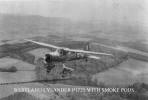 
|
Sqn |
Duration |
Aircraft |
Training and Operations |
|
239 |
2/5/42 to 14/5/42 |
Mustang Mk 1s |
Training in Tactical
Reconnaissance. In June 42 commenced ground attack
and tactical reconnaissance sorties over France |
|
18 |
13/5/42 to 15/5/42 |
Blenheims |
No training as such
at Abbotsinch but used Dundonald as a staging post
on the way back from the Middle East to Ayr.
Mostly Malta based. Arrived Algeria Nov 42 and was
involved in N Africa (Op Torch) mainly on bombing
raids. |
|
225 |
13/5/42 to 21/5/42 |
Hurricanes & Mustang
Mk 1s |
Training in Tactical
Reconnaissance.
Served in N Africa
(Op Torch) on tactical reconnaissance for 1st Army
in Tunisia. |
|
21 |
20/5/42 to 22/5/42 |
Blenheims |
Took part in Exercise Schuyt 3.
On the 6/12/42 the Squadron's first
operation took place when 17 Blenheims bombed
the Phillips factory at the Dutch city of
Eindhoven during daylight. |
|
2 |
11/3/44 to 24/3/44 |
Mustangs |
Trained in naval
bombardment spotting for D-Day landings + aerial
photography of German coastal defences in France. |
|
409 RCAF |
27/2/44 to ? |
Beaufighter |
Provided air support for the
calibration of radar and other aids onboard Fighter
Direction Tenders. The squadron was a night fighter unit and
in May 44 became part of 2nd Tactical Air Force (T.A.F.)
becoming fully involved in intruder missions and flying
night cover over the Normandy beachhead. |
|
414 RCAF |
28/2/44 to 11/3/44 |
Mustangs |
Trained in tactical reconnaissance in preparation for
Overlord. The Squadron joined 2nd T.A.F. on its formation
and was engaged in reconnaissance as its main role but also
took part in offensive patrols over France. As D-day
approached 414 began to build up coverage of enemy defence
positions. The unit later converted to Spitfires. |
|
268 |
26/3/44 to 8/4/44 |
Mustangs |
Trained in Naval Bombardment
and Spotting.
In June 1943, 268
Squadron joined the newly formed 2nd TAF in preparation
for the invasion of Europe, after
undertaking a course in spotting
for naval bombardment in the Clyde. A task the unit
undertook on D-day. |
|
63 |
9/4/44 to 21/4/44 |
Hurricanes |
Training in providing landing
and battle ships with directions. Improved technology
resulted in two equipment changes and the allocation of
Spitfires rather than Hurricanes by D-Day. They flew many
sorties spotting for the naval guns bombarding shore
positions. |
|
26 |
10/4/44 to 21/4/44 |
Mustangs |
Trained in naval gun spotting. Spitfires were used over
Normandy reverting to Mustangs later. |
|
~ Fleet Air Arm
Squadrons on detachment to R.A.F. Dundonald 43/44 ~
|
|
879 FAA |
24/4/43 to 1/5/43 |
Seafires. |
Participated in Naval Exercise at Dundonald and left for
Stretton. Took part in the Salerno landings. On return to
the U.K in Feb 44, 879 Squadron formed part of the 4th Naval
Fighter Wing absorbing the aircraft and some crew of 886 Sqd. |
|
29 |
6/4/44 to 12/4/44 |
Mosquitos |
Calibration trials of Radar Equipment on newly equipped
Fighter Direction Tenders which later provided sea borne
radar, communications and beacon cover off Normandy for
about 3 weeks in June 1944. |
|
808 FAA |
22/4/44 to 6/5/44 |
Seafires |
Trained in bombardment, spotting & target reconnaissance. In
May the unit was attached to No 34 Recce Wing of 2nd T.A.F.
By the time of Normandy the squadron was equipped with
Seafires and put its training to good use. |
|
885 FAA |
22/4/44 to 6/5/44 |
Seafires |
Trained in bombardment spotting and escort work. Formed
part of the Air Spotting Pool of 34 Recon Wg 2nd T.A.F.
providing Bombardment Spotting and Escort's for the Invasion
Fleet. In July 44, 885 Squadron absorbed the remnants of 886
and 897 FAA Sqdn's. |
|
897 FAA |
6/5/44 to 21/5/44 |
Spitfires |
Training in tactical reconnaissance and bombardment spotting
work. On D-Day 897 was responsible for shooting down an Me
109 and damaging a midget submarine. |
|
886 FAA |
13/5/44 to 20/5/44 |
Seafires |
Trained in Bombardment Spotting and Target Reconnaissance
Training. From D-day 886 operated as part of the Air
Spotting Pool of No 34 Recce Wg 2nd T.A.F. undertaking
bombardment spotting, offensive sweeps, escort and
anti-submarine patrols In July 44 it was absorbed into 885
FAA Squadron. |

Squadron Leader Drinkwater, took
up command of 1441 Combined Operations Development Flight on the 28th Jan, 1942.
There were a number of VIP visits including one by Air Commodore FW Walker,
Commander of the newly formed Air Staff at the No 1 Combined
Training Centre, Inveraray. As the flight became
operational, the squadrons listed above were attached for Combined
Operations training. Amongst the first were 239 Squadron, who were at Abbotsinch
from May 2 - May 14, 21 Squadron, and 225 Squadron. The latter took part in
Operation Torch in North
Africa in Nov 42, where it flew tactical reconnaissance support
for the 1st Army.
 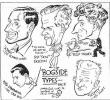 No 105 Wing, late of 71
Squadron, was established on the 28th Feb 1943 at Dankeith House. As Wing
Headquarters, they carried out administrative work for all air staff located at
the various CTCs (Combined Training Centres) bases on the west coast of
Scotland under the Command of Group Captain Geoff Wood, OBE, DFC. This newly
formed wing also looked after 1441 CO Flight. HQ 105 Wing, itself, came under
the direct command of Air Commodore Orlebar at COHQ at Richmond
Terrace, London. It also administered units at Inveraray Castle, Toward, Troon,
Skelmorlie, Arran and Largs. Air Commodore Orlebar was famous for his daring
exploits in the Schneider Trophy (high speed racing with powerful sea-planes)
when he flew a Super-marine S6 - the forerunner of the Spitfire. No 105 Wing, late of 71
Squadron, was established on the 28th Feb 1943 at Dankeith House. As Wing
Headquarters, they carried out administrative work for all air staff located at
the various CTCs (Combined Training Centres) bases on the west coast of
Scotland under the Command of Group Captain Geoff Wood, OBE, DFC. This newly
formed wing also looked after 1441 CO Flight. HQ 105 Wing, itself, came under
the direct command of Air Commodore Orlebar at COHQ at Richmond
Terrace, London. It also administered units at Inveraray Castle, Toward, Troon,
Skelmorlie, Arran and Largs. Air Commodore Orlebar was famous for his daring
exploits in the Schneider Trophy (high speed racing with powerful sea-planes)
when he flew a Super-marine S6 - the forerunner of the Spitfire.
On the 27th April
1943, 1441 FIight was disbanded and became 516 Combined Operations
Squadron. All personnel and equipment were signed over to 516 Squadron on the 28th
April 1943.
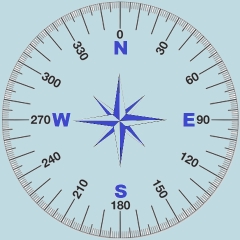 516
Squadron 516
Squadron
As the
Combined Operations training programme
rapidly expanded, it was essential to upgrade the
smaller flight to full squadron strength to meet increased demands. The
roles given to 516 Squadron were many and varied including smoke screen, laying
attacks on naval shipping, tactical reconnaissance and attacks on ground forces
practising amphibious beach landings from landing craft. In all cases
the RAF involvement was the provision of realistic battle conditions using live
ordnance in the final stages of training. The job required skills in very low
flying and accidents and fatalities were suffered by both aircrews and ground
forces.
 On the 6th of February
1944, three hurricanes from 516 Squadron took off from RAF Connell on a training
exercise in the Kentra Bay area on the NE corner of the Ardnamurchan Peninsular
(map opposite). Their task was to
undertake mock, low flying attacks on
amphibious training beach landings to provide realistic battle conditions for
the navy crews of the landing craft and the army trainees they carried. On the 6th of February
1944, three hurricanes from 516 Squadron took off from RAF Connell on a training
exercise in the Kentra Bay area on the NE corner of the Ardnamurchan Peninsular
(map opposite). Their task was to
undertake mock, low flying attacks on
amphibious training beach landings to provide realistic battle conditions for
the navy crews of the landing craft and the army trainees they carried.
Their mission completed, the
pilots set course for RAF Connell to the south east but found themselves
enveloped by thick cloud and mist which had rolled in from the west
at sea level.
They split up and tried to reach any base they could.
 W/O Stephen
made for RAF Tiree to the west, Flt Lt Woodgate took a sea level route
south-east to RAF Connel, via the
Sound of Mull and P/O Larry Figgis, climbed above the cloud ceiling at over 6000
ft on an easterly course. Not sure of his position, and running low
on fuel, he was on the
point of baling out when
a small break in the cloud appeared below him. He dived through it to a successful belly landing in a field on Carse
Farm near Stirling.
The other two
were not so lucky. W/O Stephen
made for RAF Tiree to the west, Flt Lt Woodgate took a sea level route
south-east to RAF Connel, via the
Sound of Mull and P/O Larry Figgis, climbed above the cloud ceiling at over 6000
ft on an easterly course. Not sure of his position, and running low
on fuel, he was on the
point of baling out when
a small break in the cloud appeared below him. He dived through it to a successful belly landing in a field on Carse
Farm near Stirling.
The other two
were not so lucky.

 [Photos
right; top Fl/Lt A J Woodgate and bottom W/O J E Stephen with details of
their memorial plaque opposite left.] [Photos
right; top Fl/Lt A J Woodgate and bottom W/O J E Stephen with details of
their memorial plaque opposite left.]
Three days later on
the 9th of February, police found W/O (Warrant Officer) Stephen's crashed
Hurricane on the island of Coll and the following day that of
Fl/Lt Woodgate on the side of Beinn na Seilg near Ghleamn Locha
Kilchoan Bay on Ardnamurchan.
In 1995, at the instigation of Phillip Jones, a
plaque dedicated to the memory of the pilots was secured to a granite boulder
from which both crash sites were visible. W/O J E Stephen, RAF, was 24
and Fl/Lt A J Woodgate, RNZAF, was just 21 years of age when they died.
(See also 'Correspondence' below).
Tragically, a month
later, Sgt Robert Rhodes lost his life when his Hurricane struck the ramp of a
landing craft. His plane was never recovered from
the sea and he is therefore remembered on the
Runnymede Memorial.
There were casualties, too, among the servicemen
involved in the landing exercises - proof, if it
were needed, of the realistic nature of these
training exercises. In a very real sense, the
sacrifices of the few brave men who lost their
lives during training exercises, saved countless
lives just over a year later,
when the quality of the training would be tested
to the utmost. The success of the
anticipated invasion, would largely depend on the
three services working closely together as
they were trained to do.
Most of 516 Squadron's
flying, was concentrated around Loch Fyne and along the Firth of Clyde from
Barassie to Largs. When fighter aircraft were used in more distant places, such
as the Ardnamurchan Peninsular, they used forward landing grounds, including RAF Connel, near Oban and RAF Tiree, in the Inner Hebrides, for refuelling.
 The Run-down The Run-down
516 had a mixed bag of
aircraft including Hurricanes, Mustangs, Lysanders, Blenlheims, Ansons, a Miles
Master, a Tiger Moth and a Proctor. This allowed the unit to fulfil their
commitments to the other services but often under great pressure. As operation
Overlord approached, the pace of activity at Bogside increased dramatically and
continued well after the event, as exercises with units of the Fleet Air Arm were
undertaken. However, as the nature of the conflict in France changed to a land
based operation, the demand
for Combined Operations training diminished. A signal received on the 15th Aug 1944 from HQ 105 Wing
at Dankeith ordered 516 Sqd to move from 26 Group Bomber Command to 44 Group Transport
Command and it would be administered from Prestwick.
A notice to disband
after the 2nd December was received, and by the 31st Dec, 44, 516 Squadron no longer existed.
It had been a living, vibrant community and now there was nothing
left. Personnel were posted to other units and Bogside, the location of so much
frenetic activity, was placed on a care and maintenance basis with the objective
of keeping the airfield in good working order for possible future operations and
as a emergency landing ground.
The Royal Navy returned to Bogside in
March 45 to test a target glider and the airfield served as an emergency landing
ground on several prior occasions. The army's 22nd Beach Signals Unit, used the
station for accommodation purposes during May 45; but all this activity was of
an ad hoc nature and was unable to secure the future of the airfield, which
officially closed on 1st Aug, 1945. The Army retained control of the site until
it was derequisitioned in1952, when it was returned to farmland. Fifty years on,
the second runway can still be seen in places as can the airfield drainage and
the concrete foundation of one of the windsocks. These
physical remnants are all that
remain as evidence of the vital role RAF Dundonald, and 516 Combined
Operations Squadron, played in the preparations for D-Day.
Further Reading
There are around 300 books
listed on our 'Combined Operations Books' page which can be purchased on-line
from the Advanced Book Exchange (ABE) whose search banner checks the shelves of
thousands of book shops world-wide. Type in or copy and paste the title of your
choice or use the 'keyword' box for book suggestions. There's no obligation to
buy, no registration and no passwords. Click
'Books' for more information.
516
Squadron - Memories of a Pilot - humorous recollections of
New Zealander, Douglas Shears
who served as a pilot with 516 Combined Operations Squadron from 17/7/44 to late Dec 44.
Airfield Focus - No.
35 Dundonald by Phil Jones. Published by GMS Enterprises, 67 Pyhill,
Peterborough, PE3 8QQ in 1998. 34 Pages. ISBN1 870384 66 0 £4.95
Damn my Two Left
Feet....and how I Flew with Them by Doug Shears. Published 2001 by Jeff Mill
& Associates 4/8 Nile Street, Timaru, NEW Zealand. Doug was a pilot with 516 and
the book includes a chapter on his experiences with them.
If you have any information or book
recommendations about 516 Combined Operations Squadron please
contact us.
Correspondence
  Hi
Geoff. Hi
Geoff.
I lived in Dundonald
for10 years until recently and still live in nearby Troon. I'm
a self confessed history freak and have spent many a day visiting memorials
and battlefields throughout Europe and beyond.
Whilst walking our dogs in the woods near Auchans
house ruins, Dundonald, we came across carvings in a
tree. The woods overlook what was the airfield and I
understand they were used for exercises during the
operational period.
I often wonder what became of the men who carved
their initials on what appears to be their last day before moving on from
Dundonald shortly before D Day.
I hope this is of interest to you.
 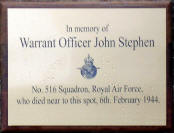 A
plaque, commemorating Warrant Officer John Stephen, was unveiled on 18th August
2008, close to the spot on the Isle of Coll where his Hurricane plane crashed in
1944. Relatives travelled from London and a great nephew flew from Hong Kong to
be present. They were joined by some islanders to witness the unveiling of the
plaque which was draped with a Union flag. A thin drizzle slightly marred the
event. A
plaque, commemorating Warrant Officer John Stephen, was unveiled on 18th August
2008, close to the spot on the Isle of Coll where his Hurricane plane crashed in
1944. Relatives travelled from London and a great nephew flew from Hong Kong to
be present. They were joined by some islanders to witness the unveiling of the
plaque which was draped with a Union flag. A thin drizzle slightly marred the
event.
It was mainly as a
result of police Sergeant Neil Owen’s efforts that the event took place. Owen
(seen crouched next to the plaque) had researched and written about the 1944
event, i.e. the flight of three Hurricanes from Oban’s Connel airfield.
The relatives met the islander who, as a young lad, had heard the crash but then
had difficulty convincing adults of the situation. After the unveiling, they saw
some of the few remains of the plane and were given a tour of the island.
Ewen McGee
 Acknowledgments Acknowledgments
This account of 516 Combined Operations Squadron
was based on research material provided by Phillip C Jones.
Phil gratefully acknowledges the willing help of ex squadron members in the
provision of photographs, illustrations and reminiscences.
|
 516 Squadron RAF (Combined
Operations), primarily provided
516 Squadron RAF (Combined
Operations), primarily provided












 On the 6th of February
1944, three hurricanes from 516 Squadron took off from RAF Connell on a training
exercise in the Kentra Bay area on the NE corner of the Ardnamurchan Peninsular
On the 6th of February
1944, three hurricanes from 516 Squadron took off from RAF Connell on a training
exercise in the Kentra Bay area on the NE corner of the Ardnamurchan Peninsular

 [Photos
right; top Fl/Lt A J Woodgate and bottom W/O J E Stephen with details of
their memorial plaque opposite left.]
[Photos
right; top Fl/Lt A J Woodgate and bottom W/O J E Stephen with details of
their memorial plaque opposite left.]




